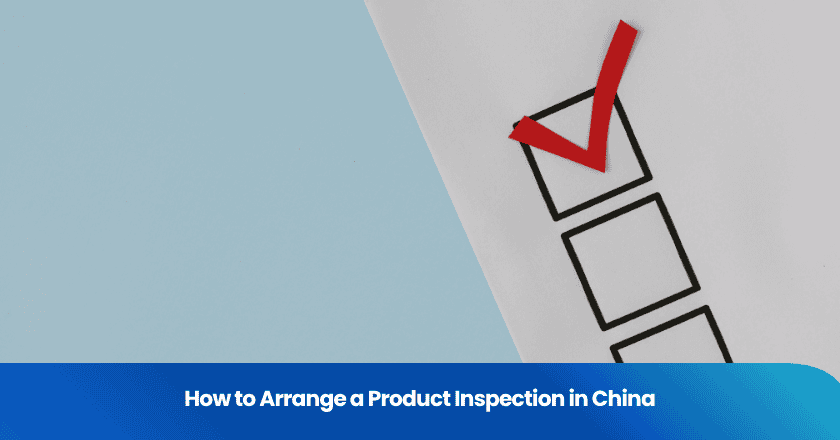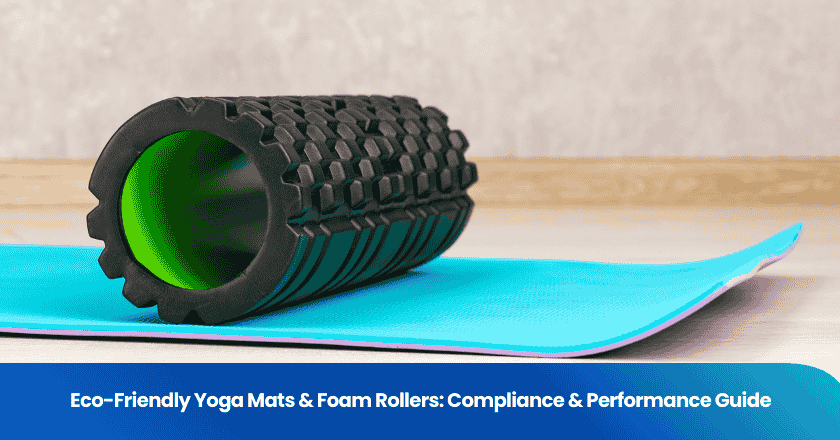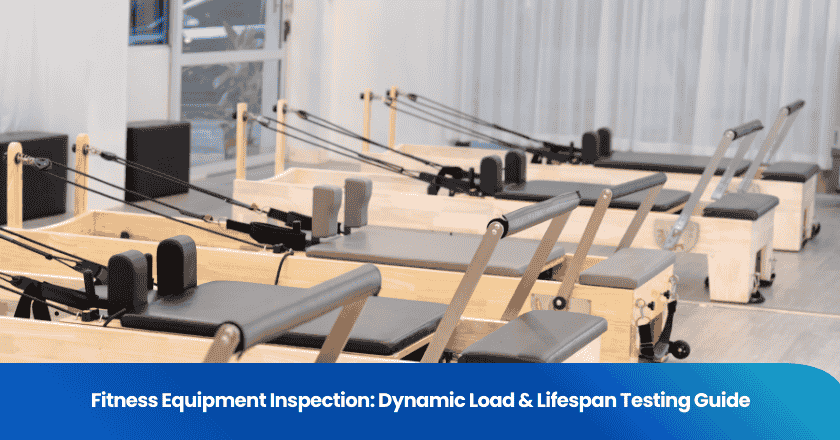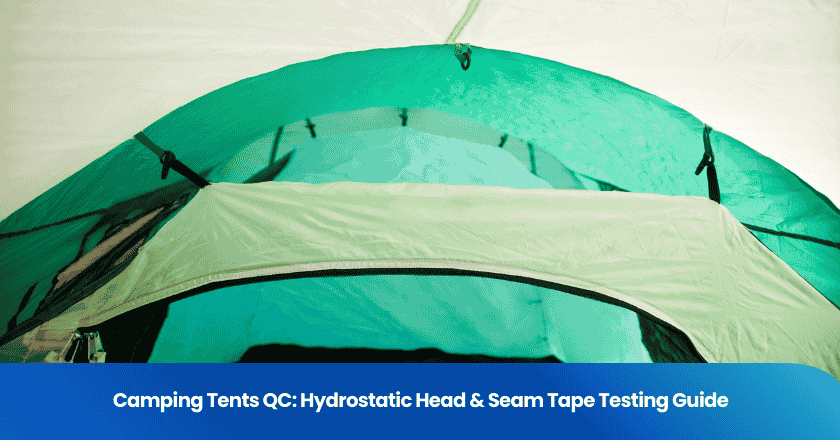
You arrange a product inspection in China by selecting qualified product inspection companies in china and following a structured process. Inspection timing matters, so choose between pre-production, during production, or pre-shipment stages.
l Select the service provider
l Book the inspection
l Schedule with your supplier
l Receive the inspection report
l Take the next steps based on results
Tip: Clear communication with your supplier and inspection team ensures reliable results.
Prepare for Quality Inspection
Gather Supplier Info
Start your quality inspection process by collecting accurate supplier information. You need the factory’s name, address, and contact details. Confirm the production site location to avoid confusion during scheduling. Request the supplier’s business license and export documents. These details help you verify the legitimacy of your partner and support effective quality control. When you share this information with the inspection company, you ensure smooth communication and avoid delays.
Tip: Double-check all supplier details before submitting them to your quality inspection provider.
Define Product Specs
You must clearly define your product specifications before arranging a quality inspection. List every detail, such as materials, dimensions, color, packaging, and labeling requirements. Provide technical drawings or reference samples if possible. Clear product specs set the foundation for quality control and help inspectors know exactly what to check. When you specify your expectations, you reduce misunderstandings and improve the accuracy of the quality inspection.
Set Inspection Criteria
Establish clear inspection criteria to guide the quality inspection team. Decide which standards or regulations apply to your product. Create a checklist that covers appearance, function, safety, and packaging. Set acceptable quality limits for defects. Share these criteria with both your supplier and the inspection company. This step strengthens your quality control process and ensures everyone understands the requirements. When you set precise inspection criteria, you make the quality inspection more effective and reliable.
Find Product Inspection Companies in China
Compare Providers
You need to compare product inspection companies in china to find the best fit for your business. Start by listing several providers that offer inspection services in your target region. Look at their service coverage, expertise, and turnaround times. You should check if they specialize in your product category. Some companies focus on electronics, textiles, or consumer goods. Others provide broader inspection services for multiple industries.
Create a simple table to organize your research:
| Provider Name | Service Coverage | Industry Focus | Turnaround Time | Languages Supported |
|---|---|---|---|---|
| Provider A | Nationwide | Electronics | 24-48 hours | English, Chinese |
| Provider B | Regional | Textiles | 48-72 hours | English, Chinese |
| Provider C | Nationwide | General Goods | 24-72 hours | English, Chinese |
You should request sample reports from each provider. Review their reporting style and detail. Ask about their process for handling urgent inspections. Reliable product inspection companies in china respond quickly and communicate clearly.
Tip: Choose providers who offer transparent pricing and flexible inspection services.
Check Credentials
You must verify the credentials of product inspection companies in china before booking inspection services. Ask for business licenses, certifications, and proof of compliance with international standards. You should confirm that inspectors have relevant training and experience. Look for companies that follow ISO guidelines or other recognized quality management systems.
Read client testimonials and case studies. These resources help you understand how each provider handles product inspection challenges. You should also check if the company has liability insurance. This protects you if issues arise during inspection services.
Contact each provider directly. Ask specific questions about their inspection services and reporting procedures. Reliable product inspection companies in china provide clear answers and documentation. You build trust by confirming credentials before you commit.
Booking the Service
Arranging inspection services in China requires a clear and organized approach. Booking the service involves several important steps that ensure your inspection runs smoothly and efficiently.
Fill Out Booking Form
You start by filling out a booking form provided by your chosen inspection company. This form collects essential information about your order and the inspection you require. You need to enter your contact details, supplier information, and the address of the factory. The form also asks for the type of inspection services you want, such as pre-production, during production, or pre-shipment inspection. Double-check all entries before submitting the form. Accurate information helps the inspection team prepare and reduces the risk of delays.
Tip: Save a copy of your completed booking form for your records. This makes it easier to reference details if questions arise later.
Provide Order Details
After you submit the booking form, you must provide detailed order information. You should include your purchase order number, product specifications, and quantity. Attach any technical drawings, product photos, or reference samples if available. These details help the inspection team understand your requirements and focus on the right quality standards. You also need to specify the inspection criteria and acceptable quality levels. Clear order details allow the inspection services provider to tailor their checks to your needs.
List of key order details to provide:
l Purchase order number
l Product name and model
l Quantity and batch numbers
l Technical specifications
l Inspection criteria and standards
You should communicate directly with your supplier to confirm the production schedule and factory availability. This coordination ensures the inspection services can take place at the right time and location.
Make Payment
Once you complete the booking form and submit your order details, you proceed to payment. Most inspection services require payment before they confirm your booking. You will receive an invoice with payment instructions. Common payment methods include bank transfer, credit card, or online payment platforms. Review the payment terms carefully, including cancellation and refund policies. After you make the payment, the inspection company will send you a confirmation email with the inspection date and details.
Note: Keep your payment receipt and confirmation email. These documents serve as proof of your booking and help resolve any issues quickly.
Booking the service in advance gives you more flexibility in scheduling and ensures the inspection team can allocate resources to your project. By following these steps, you set a strong foundation for a successful inspection process.
Scheduling the Inspection
Choose Inspection Date
You need to select the right date for your inspection. The timing depends on your production schedule and the inspection stage you choose. Many importers prefer a pre-shipment inspection because it checks finished goods before they leave the factory. You can also request inspections during production or even before production starts. Each stage offers different benefits. A pre-shipment inspection helps you catch defects before shipping, reducing the risk of receiving poor-quality products.
To make the best decision, review your order timeline and discuss options with your supplier. If you want to use a pre-shipment inspection service, confirm that production will finish before your chosen date. You should avoid scheduling the inspection too early, as incomplete goods may not reflect final quality. If you wait too long, you risk delays in shipping.
Tip: Always align your inspection date with your supplier’s production milestones to maximize effectiveness.
Coordinate with Factory
After you choose the inspection date, you must coordinate with the factory. Contact your supplier and share the proposed date for the inspection. Confirm the location and ensure the goods will be ready for review. You should provide the factory with details about the inspection process, including the type of inspection, such as pre-shipment inspection. Clear communication prevents misunderstandings and helps the inspection team access the products efficiently.
Create a checklist to streamline coordination:
l Confirm inspection date with supplier
l Verify product readiness for pre-shipment inspection
l Share inspection criteria and requirements
l Provide factory address and contact details
l Arrange access for inspection team
You should keep all parties informed throughout scheduling the inspection. When you confirm the date and location, you avoid last-minute changes and ensure a smooth process.
Note: Early coordination with your supplier and inspection company helps you resolve any issues before the inspection team arrives.
Conducting the Inspection
On-site Checks
When you arrive at the factory for product inspection, you need to focus on the environment and production process. You should verify that the facility meets basic safety and cleanliness standards. Inspectors often check equipment, storage areas, and worker practices. You must confirm that the factory follows your quality control requirements.
A typical on-site checklist includes:
l Factory cleanliness and organization
l Equipment maintenance and calibration
l Worker hygiene and safety gear
l Storage conditions for raw materials and finished goods
l Compliance with production schedules
Tip: Take photos during on-site checks. Visual evidence supports your quality control decisions and helps resolve disputes.
You should communicate directly with factory staff. Ask questions about production steps and address any concerns immediately. This approach ensures that you maintain control over the inspection process.
Sample Selection
You need to select samples for detailed review during the product inspection. The sample selection process plays a critical role in quality control. You should choose samples randomly from the batch to avoid bias. Inspectors often use international standards such as AQL (Acceptable Quality Level) to determine sample size.
Follow these steps for effective sample selection:
1. Confirm the total quantity of goods ready for inspection.
2. Use a random sampling method to pick units from different cartons or pallets.
3. Record the sample numbers and locations for traceability.
4. Ensure that samples represent the entire batch, not just the best products.
| Step | Action | Purpose |
|---|---|---|
| 1 | Count total quantity | Establish batch size |
| 2 | Random selection | Prevent selection bias |
| 3 | Document samples | Support traceability |
| 4 | Review batch variety | Ensure fair representation |
Note: Random sample selection increases the reliability of your pre-shipment inspection results.
You should always confirm the sample selection method with your inspection team. This step strengthens your quality control process and builds trust with your supplier.
Quality Verification
You must verify the quality of selected samples according to your inspection criteria. During the pre-shipment inspection, inspectors check appearance, functionality, packaging, and labeling. You should compare each sample against your product specifications and quality control checklist.
Key areas for quality verification:
l Visual inspection for defects, scratches, or color inconsistencies
l Functional tests to confirm product performance
l Packaging review for correct labeling and protection
l Measurement checks for dimensions and weight
l Safety and compliance tests if required
Callout: If you use a pre-shipment inspection service, you can catch issues before products leave the factory. This step protects your business from costly returns and customer complaints.
You should document all findings during quality verification. Record defects, take photos, and note any deviations from your standards. Share these results with your supplier and inspection company. Clear documentation supports effective quality control and helps you make informed decisions about shipment approval.
By conducting the inspection with a structured approach, you ensure that your products meet expectations and comply with your requirements. You reduce risks and maintain high standards for every order.
Inspection Report
Review Findings
After receiving the inspection report, you need to review the findings carefully. The report provides a summary of the product inspection, including photos, measurements, and notes on any defects. You should check each section to confirm that the inspection team followed your criteria. Look for clear documentation of sample selection, test results, and packaging checks.
A typical inspection report includes:
l Overview of the inspection date and location
l List of products inspected and sample sizes
l Photos of products, packaging, and any defects
l Table of test results for appearance, function, and safety
l Notes on compliance with your specifications
Tip: Use the report’s photos and tables to compare actual products with your requirements. This step helps you identify any issues before shipment.
You should contact the inspection company if you need clarification on any findings. Detailed inspection reports make it easier to discuss results with your supplier and decide on next steps.
Understand Pass/Fail
You must understand the pass/fail status in the inspection report. The report usually highlights whether the batch meets your quality standards. If the products pass, you can approve shipment with confidence. If the report shows a fail, you need to review the reasons and decide how to proceed.
| Status | Action Required | Example Reason |
|---|---|---|
| Pass | Approve shipment | All specs met |
| Fail | Address issues | Defects found |
You should discuss any failed items with your supplier. Request corrective actions or re-inspection if necessary. Clear communication ensures you resolve problems quickly and protect your business interests.
Note: Understanding the pass/fail outcome helps you make informed decisions and maintain control over your supply chain.
Next Steps
Approve Shipment
Once you receive a satisfactory inspection report, you can move forward with shipment approval. Review all findings from the pre-shipment inspection to confirm that the products meet your quality standards. Check the photos, measurements, and defect lists in the report. If everything matches your requirements, notify your supplier and the inspection company that you approve the shipment.
You should follow these steps to finalize approval:
1. Review the inspection report in detail.
2. Confirm that all products passed the pre-shipment inspection.
3. Communicate your approval to the supplier.
4. Arrange for shipping and logistics.
Tip: Keep a copy of the inspection report and your approval communication for your records. This documentation helps you resolve any future disputes.
Address Issues
If the inspection report highlights any problems, you need to address them before shipment. Start by identifying the specific issues listed in the report. Contact your supplier to discuss the defects or non-conformities. Request corrective actions, such as reworking the products or replacing defective units. You may also consider scheduling a re-inspection to verify that the supplier fixed the issues.
Here is a simple process for taking action when problems arise:
l List all defects or issues from the inspection report.
l Communicate clearly with your supplier about required corrections.
l Set a deadline for corrective actions.
l Decide if a follow-up inspection is necessary.
Note: Taking action quickly helps you avoid delays and ensures that your products meet your expectations before shipment.
By following these steps, you maintain control over your supply chain and protect your business from costly mistakes.
Costs and Payment
Pricing Models
You will find several pricing models when booking product inspection services in China. Most inspection companies use a flat-rate fee per inspection day. This model gives you a clear idea of your costs upfront. Some providers offer tiered pricing based on the number of inspection days or the complexity of your product. You may also encounter volume discounts if you schedule multiple inspections within a certain period.
Here is a quick overview of common pricing models:
| Pricing Model | Description | Best For |
|---|---|---|
| Flat-rate per day | Fixed fee for each inspection day | Standard, one-time inspections |
| Tiered pricing | Lower rates for multiple days or complex checks | Large or complex orders |
| Volume discounts | Reduced rates for frequent inspections | Ongoing or bulk orders |
Tip: Always ask for a detailed quote before confirming your booking. This helps you avoid hidden fees and budget accurately.
You should also check if the price includes travel expenses, report preparation, and follow-up support. Some companies charge extra for urgent bookings or inspections in remote areas.
Payment Terms
You need to understand the payment terms before you finalize your inspection booking. Most inspection companies require full payment in advance. This policy secures your inspection date and ensures the team can allocate resources to your project. Some providers may accept a deposit with the balance due after the inspection.
Common payment methods include:
l Bank transfer
l Credit card
l Online payment platforms
You should review the cancellation and refund policies. If you need to reschedule or cancel, some companies may charge a fee. Always keep your payment receipts and confirmation emails for your records.
Note: Clear payment terms protect your interests and help you manage your inspection process smoothly.
Choosing the Right Partner
Reputation
You need to evaluate the reputation of any product inspection company before making a decision. A strong reputation signals reliability and professionalism. Start by searching for client reviews and testimonials online. Look for feedback about the company’s consistency, accuracy, and responsiveness. You can also check industry forums or trade groups for recommendations.
Consider these reputation indicators:
l Years of experience in product inspection
l Positive feedback from importers and manufacturers
l Case studies that show successful inspections
l Membership in recognized industry associations
| Reputation Factor | Why It Matters |
|---|---|
| Experience | Shows expertise and stability |
| Client Reviews | Reflects service quality |
| Industry Membership | Indicates credibility |
Tip: Reach out to previous clients if possible. Direct feedback gives you a clearer picture of the company’s strengths.
You should avoid companies with inconsistent reviews or unresolved complaints. A reputable partner helps you reduce risks and ensures your products meet standards.
Communication
Effective communication plays a key role in a successful inspection process. You need a partner who responds quickly and provides clear updates. Test their responsiveness by sending questions before booking. Notice how they answer and how long it takes to get a reply.
Strong communication includes:
l Clear explanations of inspection procedures
l Timely updates on scheduling and results
l Detailed answers to your questions
l Support in your preferred language
Note: Good communication prevents misunderstandings and helps you solve problems faster.
You should choose a company that assigns a dedicated contact person for your project. This person guides you through each step and addresses your concerns. If you face language barriers, select a provider with multilingual staff. Reliable communication ensures you stay informed and in control throughout the inspection process.
You can arrange a product inspection in China by following a clear process: prepare your documents, choose a qualified inspection company, book the service, schedule with your supplier, and review the report. Timely booking and working with reliable partners help you avoid costly mistakes and protect your business.
l Take control of your supply chain
l Ensure product quality
l Build trust with your suppliers
Tip: Act early to secure inspection dates and safeguard your investment.
FAQ
What documents do you need for a product inspection in China?
You need your purchase order, product specifications, supplier details, and inspection criteria. You should also prepare technical drawings or reference samples if available.
How long does a typical product inspection take?
Most inspections finish within one day. Complex products or large orders may require more time. You should confirm the schedule with your inspection company before booking.
Can you reschedule an inspection if production delays occur?
Yes, you can reschedule. Contact your inspection company and supplier as soon as possible. Early communication helps you avoid extra fees and ensures a smooth process.
What happens if inspectors find defects during inspection?
You should review the inspection report and discuss issues with your supplier. Request corrective actions or a re-inspection. This step protects your business and ensures product quality.
Do inspection companies provide reports in English?
Most inspection companies offer reports in English and Chinese. You should confirm language options before booking to ensure you understand all findings.
Grow your business with TradeAider Service
Click the button below to directly enter the TradeAider Service System. The simple steps from booking and payment to receiving reports are easy to operate.



